MUSIC
how it all began.

It started with an
idea
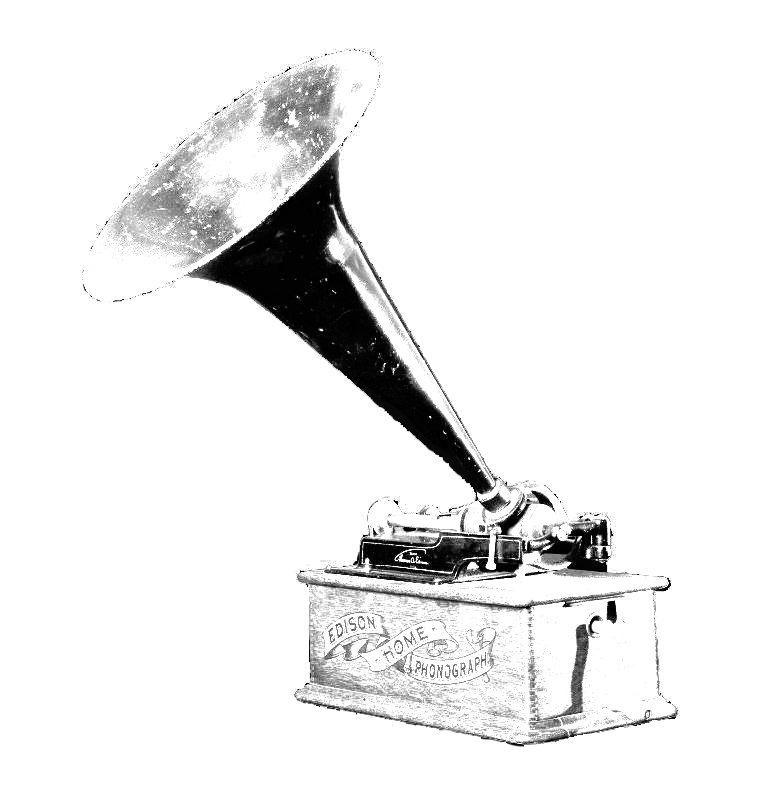

An exemple of recording: "In The Gloaming"
It was actually recorded in 1886 and is called "In The Gloaming". Words by Meta Orred, music by Annie Fortescue-Harrison
Thomas Edison invented the phonograph. While other inventors had produced devices that could record sounds, Edison's phonograph was the first to be able to reproduce the recorded sound. As the cylinder or disc rotates, a stylus or needle traces the wavy lines and vibrates to reproduce the recorded sound waves. It was the grand-father of today's turntables!
Then, Alexander Graham Bell invented the first harmonic telegraph allowing sound signal processing in the electrical field and remote transmission
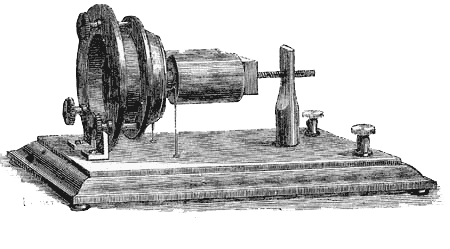
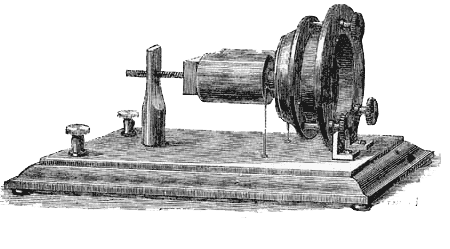
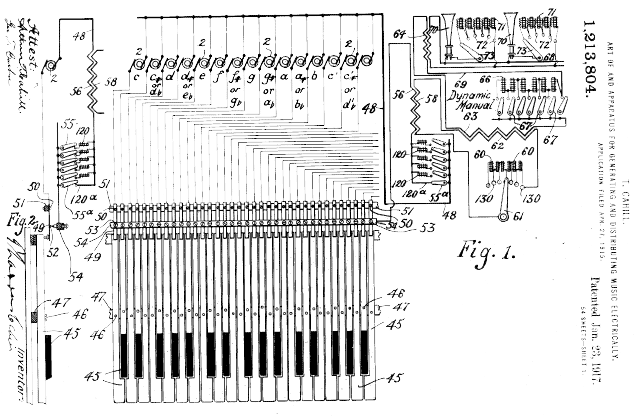
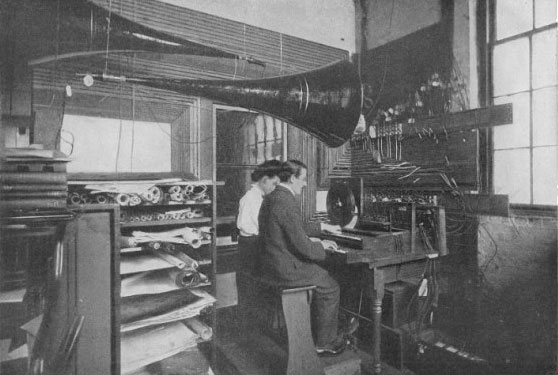
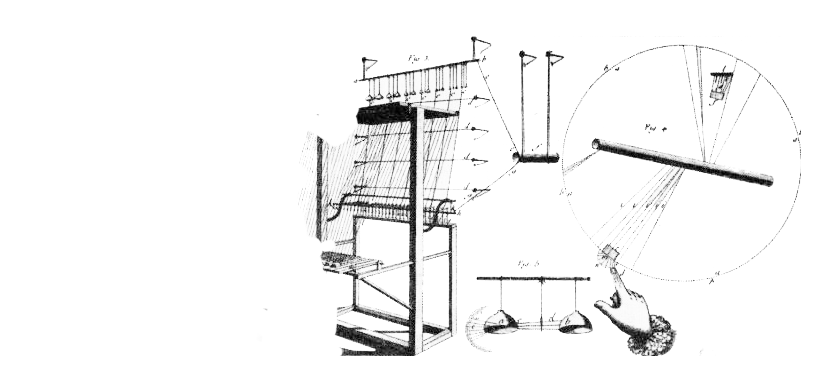
After fooling around with his telephone, trying to broadcast music through the phone lines, Thaddeaus Cahill had the idea for the Telharmonium. He figured that if he could send music through the telephone at the proper volume, he could set up a tidy business providing music to hotels, restaurants, and even private homes. Cahill invented what we know of today as "Muzak". In his patent, Cahill used the term "synthesizing." The Telharmonium was truly the world's first Synthesizer.
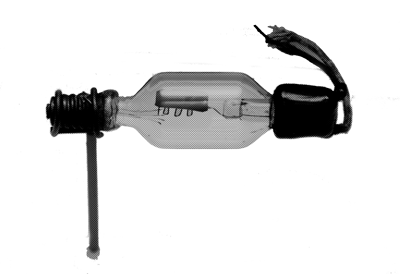
1906 sees the arrival of electronics with the invention of the triode vacuum tube by Lee De Forest. The triode can amplify an electrical signal. This new technology is being developed over the years to get a better amplification.
Many new instruments appeared based on the triode vacuum technology. An exemple: the Thereminvoxen in 1920. Move the mouse to play with it.
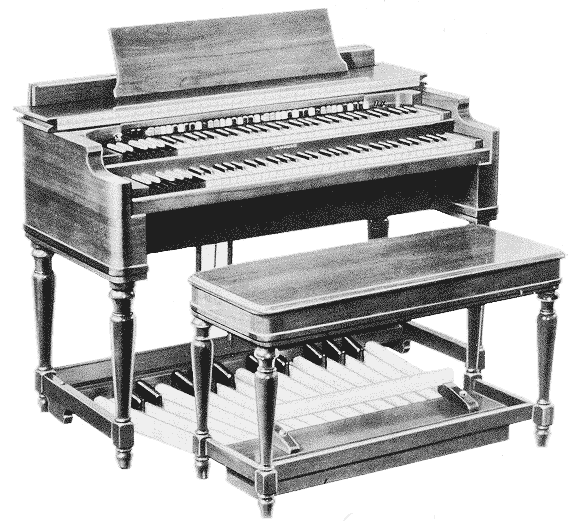
Another exemple of a new instrument that appeared based on the triode vacuum technology: the electric organ Hammond in 1934. Play the notes using mouse click.
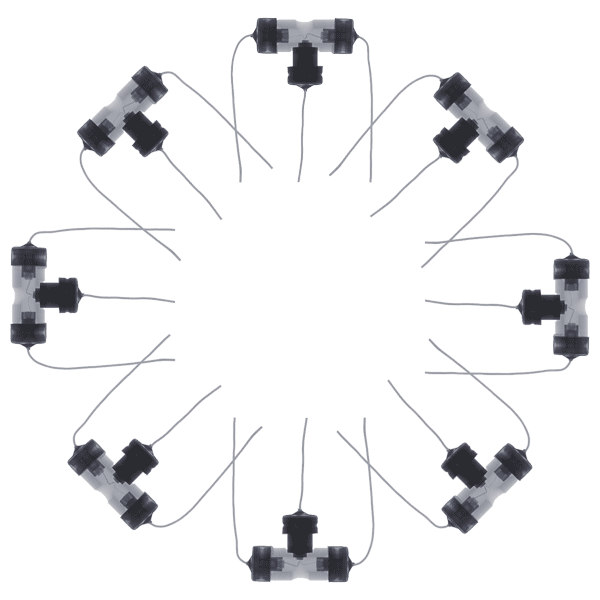





The second current of changes in contemporary music starts right after the World War II in 1948, with the invention of the transistor. It offers a smaller size and minimal weight when compared to triode vacuum, allowing the development of miniaturized electronic devices.
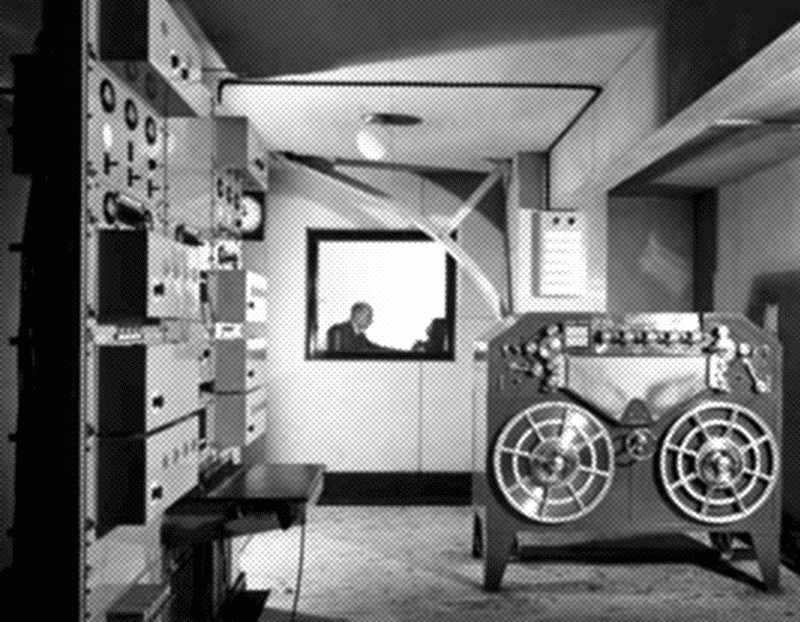
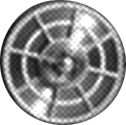
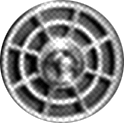
An exemple of recording: "Étude aux chemins de fer"
The first piece of "musique concrete," composed by Pierre Schaeffer in 1948, made of collage of sounds produced by trains.
A technological advancement that had a significant impact on electronic music was the mass marketing of the magnetic tape recorder in 1948. This initiated many tape techniques such as tape splicing, tape echo, tape delay and tape looping and a new genre of early electronic music was born: Musique concrète. It was first developped in France in 1948 by Pierre Schaeffer. In musique concrète, sound material primarily consisted of recorded natural sounds that were composed using the media itself.






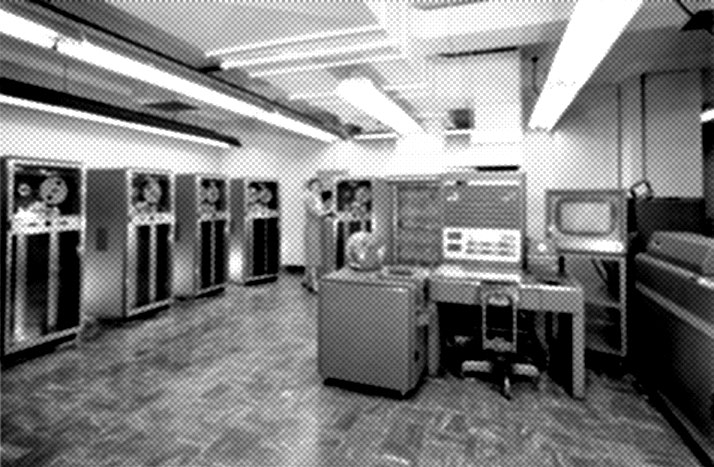
The IBM 704 was the first mass-produced computer with floating point arithmetic hardware, introduced by IBM earlier in 1954. Max Mathews, an engineer at Bell Telephone Laboratories demonstrated the first computer-generated sound. This was accomplished with his computer synthesys program we wrote in 1957 for the IBM 704: MUSIC I.
"The Silver Scale"
The first 17 seconds of music programmed by Mathews in 1957. He recorded the result for posterity.
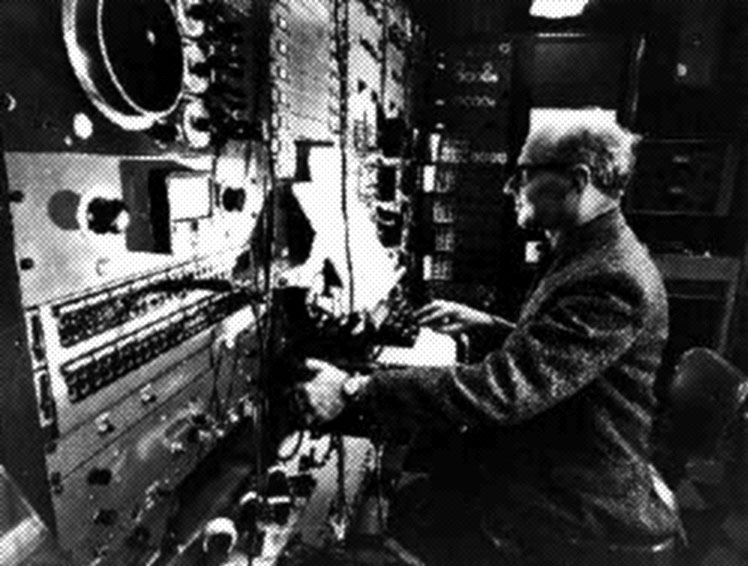
With transistor technology being developed, RCA unveiled, in 1957, the first programmable synthesizer at Columbin University in New York: the new Mark II Electronic Music Synthesizer. It is a fully automated binary sequencer using a paper tape reader analogous to a player piano.
"Ensembles for synthesizer"
An excerpt of a piece composed by Milton Babbitt in 1961, using the Mark II Synthesizer.
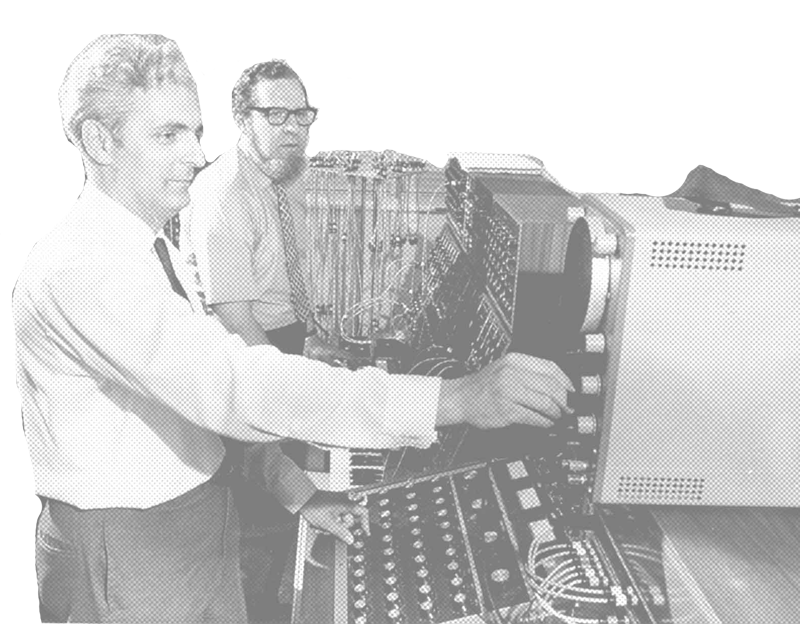
The electronician Robert Moog, among others, presents a smaller version of the voltage-controlled synthesizer, making this kind of instrument available to most composers, universities and popular musicians. It opens the way to a different way to design electroacoustic instruments. You can play with a mini version of the Moog made by Google on right.
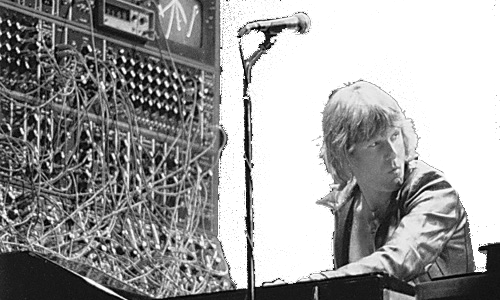
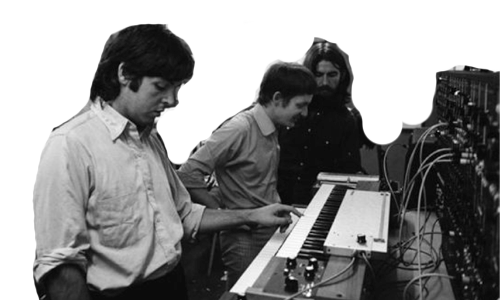
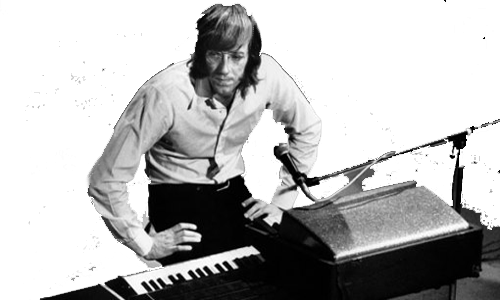
The sound of Moog's large modular synthesiezers of the 1960s, was popularized by the 1968 release of Wendy Carlos' Switched on Back: an all-synthesizer album that became the top-selling classical music of all time. In addition, many pop/rock musicians begin integrating the Moog in their music in the late 60s and early 70s: the Doors, the Beatles, the Byrds, Keith Emerson.
"Strange Days" by The Doors (1967)
"Lucky Man" by Emerson, Lake and Palmer (1970)
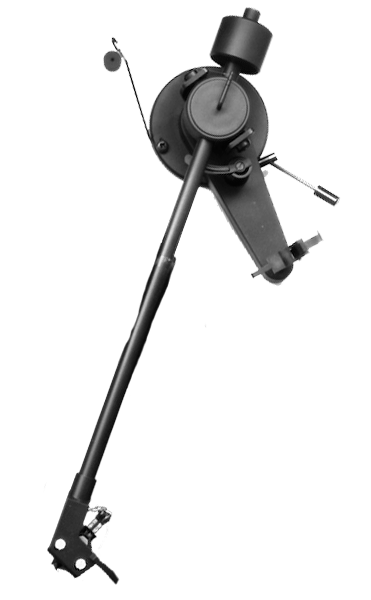
The integrated circuit and microprocessor appeared in the 1970s, resulting in a decrease in size, cost and complexity for computers and synthesizers. And very soon, programmable synthesizers made their apparition on the consumer market. And we saw the apparition on pop charts of all-electronic bands or artists such as: Kraftwerk, Jean Michel Jarre, Giorgio Moroder, Gary Numan, etc.
"Europe Endless" by Kraftwerk (1976)
"Cars" by Gary Numan (1979)

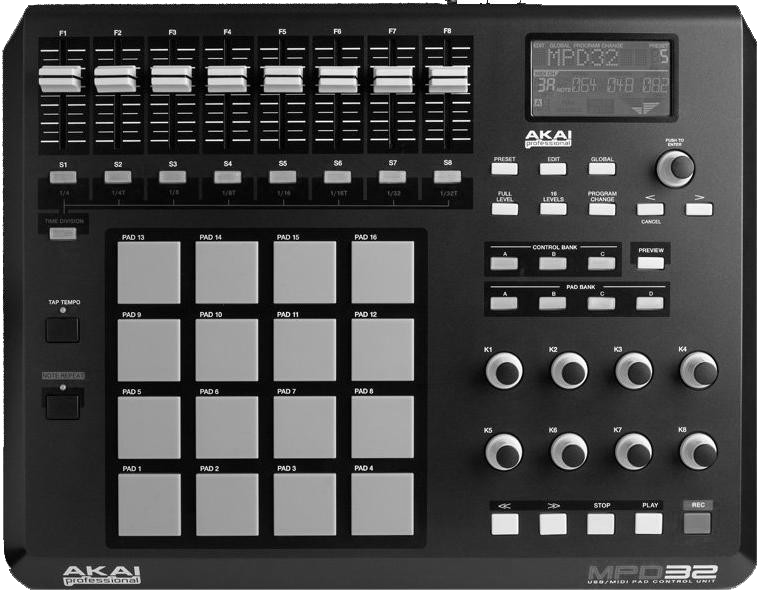
In the 1980s, the idea of a standard for digital communication between electronic music devices was discussed. The MIDI (Musical Instrument Digital Interface) was finally published in 1985 and became the official standard used by everyone. Personal computers from IBM and Apple Computer began to dominate the market for home computing. Rudimentary and inexpensive music software packages began to appear for the creation of computer music
In recent years, as computer technology has become more accessible and music software has advanced, interacting with music production technology is now possible using means that bear no relationship to traditional musical performance practices. It is now possible to create high quality music using little more than a single laptop computer. Such advances have democratized music creation, leading to a massive increase in the amount of home-produced electronic music available to the general public via the Internet.